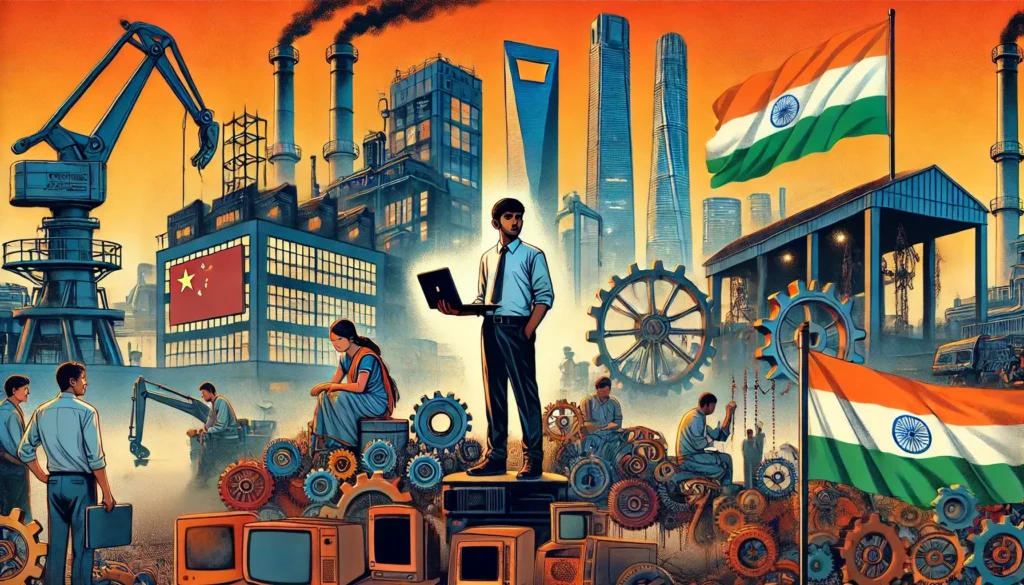In the 1990s, India stood on the brink of greatness. The economy had liberalized. A generation of English-speaking, engineering-savvy youth was ready. Globalization was opening new doors. The internet was exploding. Yet three decades later, India still owns nothing of the modern technological world — not the platforms, not the patents, not the infrastructure, and not the narrative.
This is not a story of missed chances — it’s a story of deliberate neglect. A joint failure of India’s corporate giants and its government to bet on research, own innovation, or build strategic capacity. It is why India, today, despite its wealth of talent, remains the world’s back office instead of a global leader.
The U.S. Trifecta: Research, Academia, Free Market
The United States is the only country to successfully align the trifecta of:
- Massive government R&D funding (through DARPA, NIH, DOE, NASA)
- Research-intensive universities (MIT, Stanford, Caltech, etc.),
- A free-market private sector that commercializes ideas at massive scale.

This trifecta birthed every major wave of global transformation in the last 75 years:
- Biotech & Pharma → NIH-funded, academia-driven, private-sector commercialized (Pfizer, Moderna)
- AI and Cloud Infrastructure → Trillion-dollar bets from Google, Amazon, Microsoft
- Space & Physics → NASA, Caltech, SpaceX
- Social Media & App Economy → Meta, Apple, Alphabet
The result? America doesn’t just consume tech. It owns the IP. It sets the standards. The rest of the world — India included — merely integrates, adapts, and pays royalties.
China’s Counter Model: From Manufacturing to Deep-Tech Supremacy
China took a different path. It opened up in the 1980s, focused on becoming the world’s factory, and lifted 167 million out of poverty. But in the 2000s, Beijing shifted gears — from manufacturing to innovation.
- They funded education and research:
– Built world-class K-12 schools and modernized public universities.
– Increased R&D spending from <1% to over 2.2% of GDP.
– Created national missions around AI, chips, batteries, robotics, solar. - They recruited the world’s best:
Through programs like Plan 111, China actively hired top professors from MIT, Stanford, Cambridge, etc., offering them co-directorships in Chinese universities, lab grants, and long-term funding.

Through the Thousand Talents Plan, they lured Chinese scientists and engineers from abroad — offering:
- Tax-free bonuses,
- Millions in startup funds,
- Priority visas, housing, and university tenure,
- Autonomy to build labs and hire teams.
By the 2020s, China had surpassed the U.S. in scientific paper output, was leading the world in battery and EV tech, robotics, 5G, and was closing the gap in AI and quantum computing.
This wasn’t an accident. It was strategic statecraft — with results.
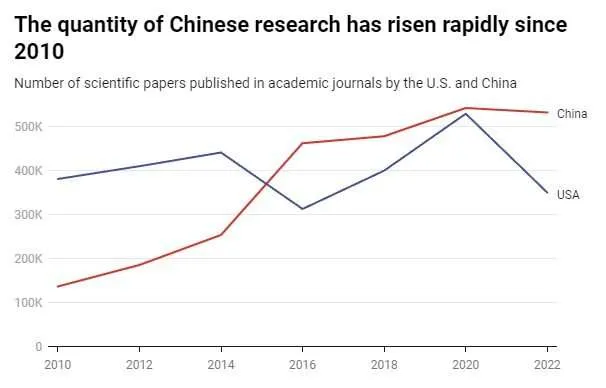
Sources:
Nature: “China’s Plan to Lure Back Scientists”
Stanford Center on China’s Economy & Institutions
Wikipedia — Plan 111
SCMP: “China’s Return Incentive Scheme Lures Scientists”
India: The Nation That Billed Hours, Not Built Products
India’s trajectory started strong. When the West needed software developers, India delivered. TCS, Infosys, Wipro, HCL — giants of the service economy — were born. Private engineering colleges popped up like mushrooms. IT services boomed.
And then… nothing.
India settled. Its IT industry locked into a glorified clerical mindset: maintain someone else’s code, bill hours, repeat.
Not one Indian IT giant dared to build global products. Not one built core infrastructure. Not one pioneered a platform.
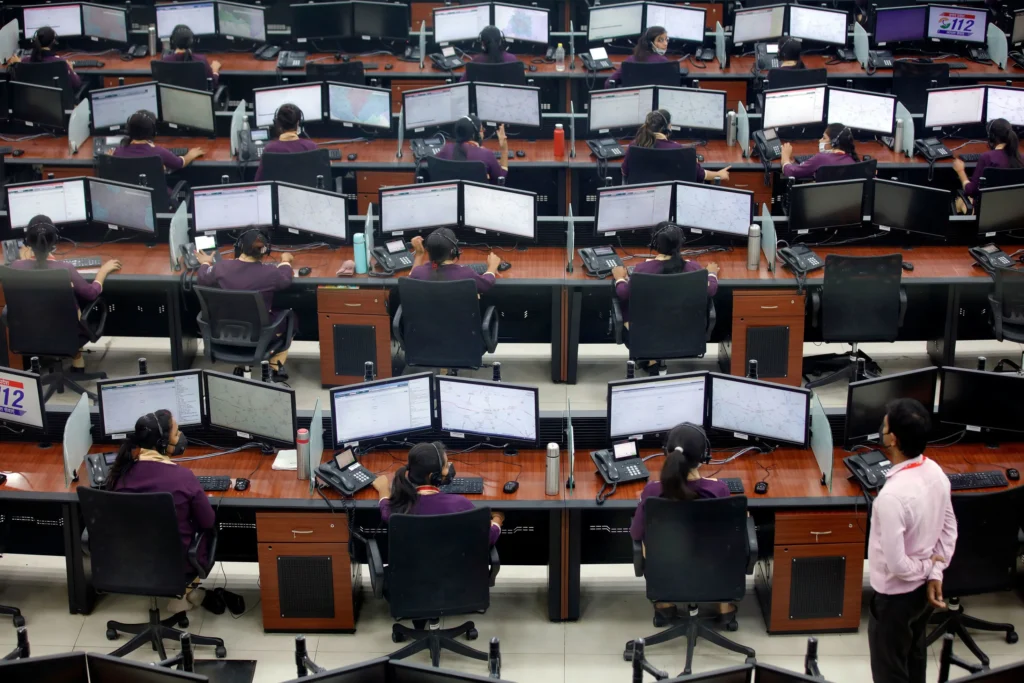
Instead of using the 2000s tech boom to build, India exported its best minds to Silicon Valley or locked them into a loop of legacy software support.
The R&D Catastrophe
Consider this:
R&D Spend by U.S. Tech Titans (2023–2024):
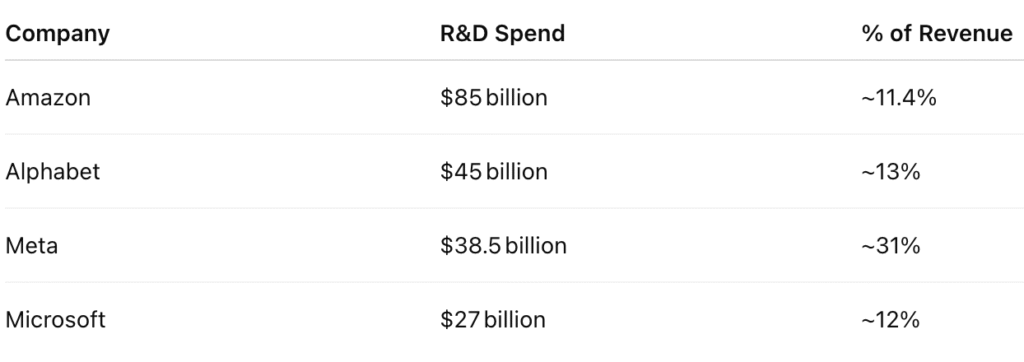
Now compare to India’s largest firms:
R&D Spend by India’s Top Companies (2024):
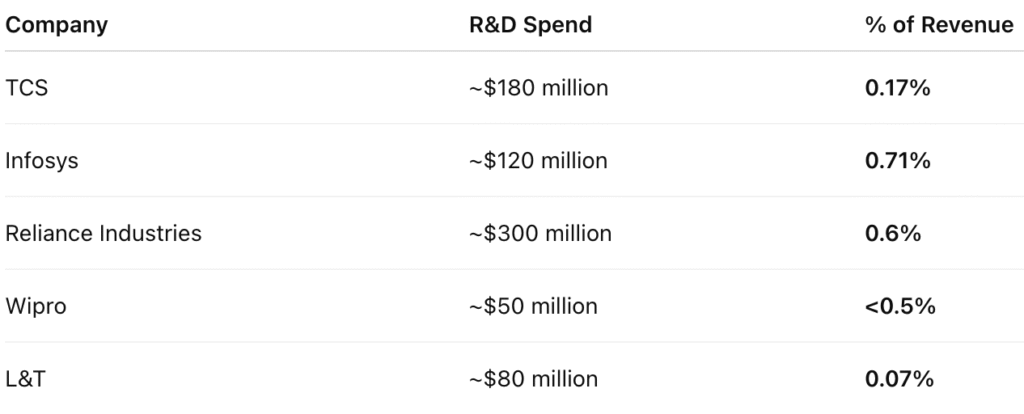
Sources:
Rocking Horse Group
Outlook Business
Financial Express
Spendmenot.com
This isn’t just a gap. It’s a strategic void. Indian companies don’t build IP. They don’t invest in long-term tech bets. They don’t even pretend to be product-first.
What Did U.S. Tech Create vs. Indian Tech?
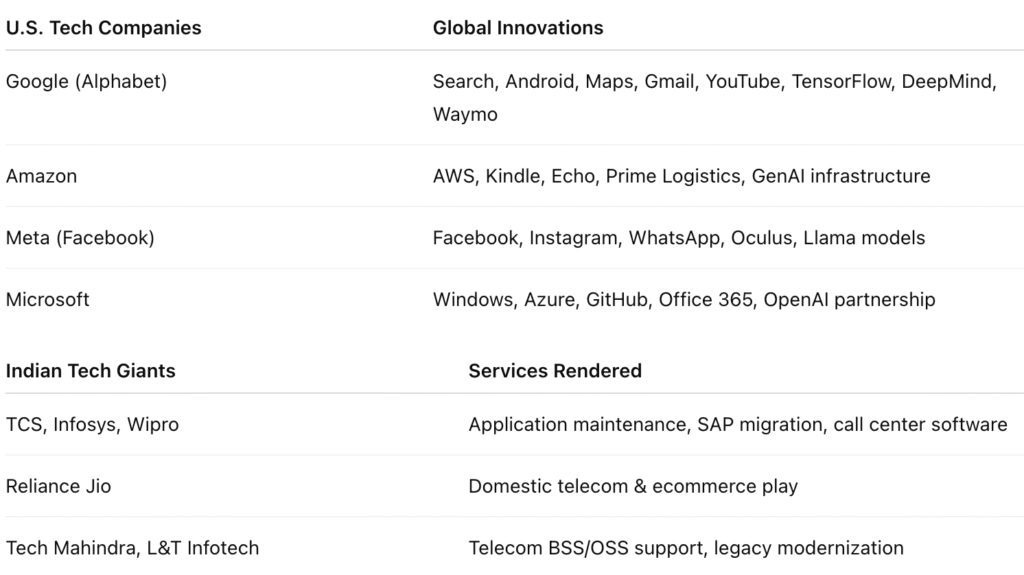
India’s tech sector didn’t build the future. It merely serviced those who did.
India’s Talent Was Never the Problem
India produces millions of engineers every year. It has the largest global diaspora of STEM workers, powering NASA, Google, Microsoft, and biotech labs across the West.
But back home?
- No reverse brain-drain plan, like China’s.
- No recruitment of top foreign professors.
- No DARPA, no SBIR, no coordinated national R&D agency.
- No IP-first culture in industry.
The Indian state and corporate sector essentially exported their best people and underfunded those who stayed.
The Consequences: Dependency and Obsolescence
India now relies on foreign companies for:
- Its cloud infrastructure (AWS, Azure),
- Its smartphones (Apple, Samsung),
- Its search engines, social platforms, OS, and
- Even its AI tools (ChatGPT, Bard, Llama).
India owns no general-purpose technology. In space, biotech, semiconductors, AI, clean tech — India is not a leader. It’s a market. A consumer.
The Tragedy of Untapped Genius
India had everything:
- Talent.
- Timing.
- Opportunity.
But its companies chose margins over moonshots. Its government chose slogans over science. And the result? An entire generation of brilliant Indians were trained — not to invent, but to serve.
If India wants to be more than a footnote in the story of 21st-century innovation, it must:
- Quadruple its R&D spend,
- Fund research universities,
- Lure back its diaspora with real incentives,
- Challenge its companies to build, not just bill.
Otherwise, India will go down in history as the world’s most talented nation that built nothing for itself.



